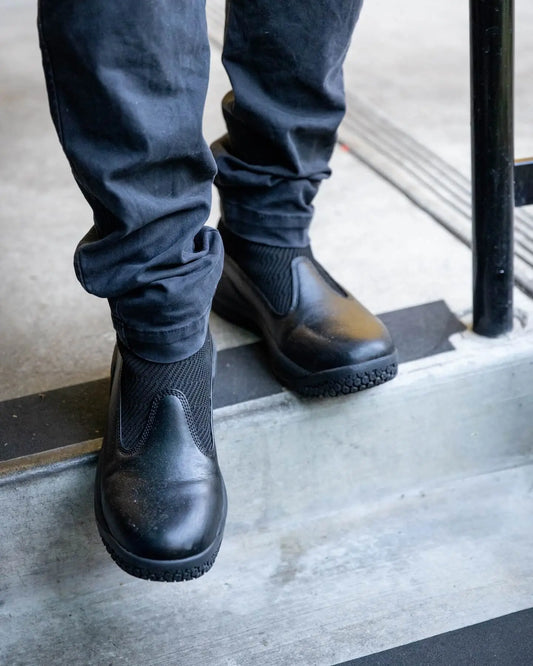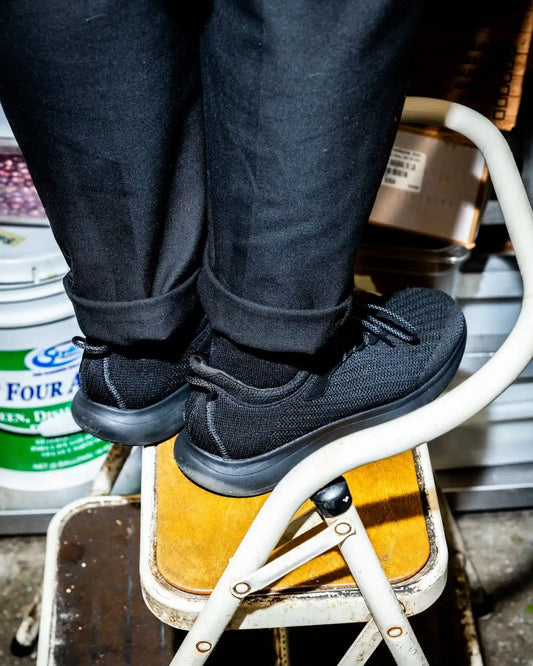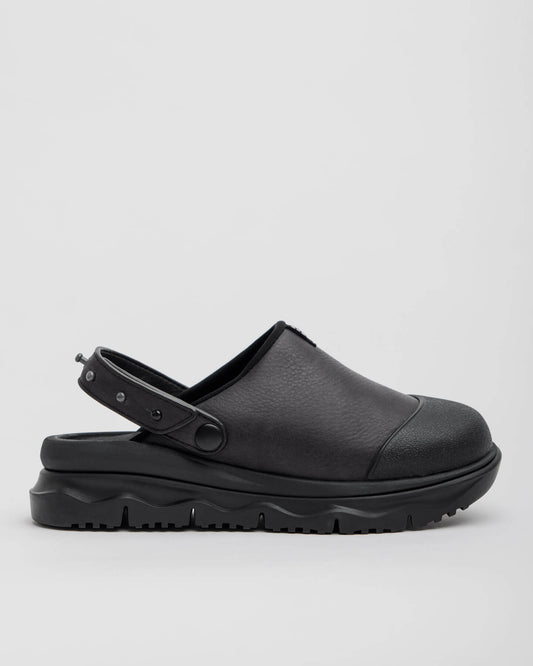What Is Doctor Burnout?
Alex Kinejara
Physician burnout is an epidemic in the American healthcare system that affects close to two-thirds of physicians.1 The result can have a negative impact on not just patient care, but also on the personal lives and career satisfaction of medical professionals.
With physician burnout on a steady rise over recent years, it's more important than ever to understand its causes and how it can be both prevented and treated.
What Causes Doctor Burnout?
You can think of doctor burnout as a car with an empty gas tank. If a car continues to run on empty, the engine will overheat and the car will fail.
Doctors with burnout are also running on fumes. Long-term stress can lead to emotional, mental, and physical exhaustion, and physician burnout causes feelings of depression and depersonalization, which can affect patient care.
Most often, physician burnout is a result of stressful working conditions, an imbalance in work-life priorities, and inefficient structures within the healthcare system.1
#1 Stressful Work Environment
It’s no secret that healthcare workers have highly stressful jobs. On a daily basis, physicians are facing distressed patients in need of immediate care, as well as their worried families. High-stakes environments can take a significant toll on the mental health of healthcare professionals and hinder their ability to function at a high level
On top of the overall stress of general patient care, a doctor’s specific job function can impose a unique set of stressors. This administrative burden includes personal call rotation, compensation formula, local healthcare politics, personality clashes within specific departments, leadership, and much more.
#2 Work-Life Balance
One of the most discussed topics in the professional zeitgeist is work-life balance; however, the medical field is almost always left out. Life-balance skills are not taught in medical school; rather, medical students are often taught to prioritize the needs of others over their own.
In addition to having to learn how to get through 12-hour shifts, doctors and nurses are often on-call, eliminating the possibility of truly unwinding. On top of that, personal issues can also inhibit the ability to recharge and unwind after work.
#3 Mental Conditioning
Medical school is a 7+ year endeavor in which students, in addition to mastering their trade, are hard-wired with a physician’s persona. These traits are often vital for success; however, many can lead to burnout:
- Workaholic – The response to challenges is to work harder, and taking breaks is frowned upon.
- Superhero – Every problem that arises sits on your shoulders.
- Perfectionist – Mistakes cannot be tolerated and everyone is held to the same standard.
- Micromanager – Everything must be done by you.
Additionally, physicians are often indoctrinated with two prime directives: “The patient comes first” and “never show weakness.” While many doctors believe these traits to be necessary, they can become fast-tracks to burnout.
#4 High-Stress Education
Burnout can begin long before physicians even begin their medical practice. Medical school is widely regarded as one of the most stressful educational tracks. In medical school, students often normalize such behavior as all-nighters, binge drinking, and financial stress. Medical students incorporate these unhealthy behaviors as they navigate how to get through residency and other stressful periods of medical training, leading to reports of depression:
- Medical student rates of depression are 15 to 30% higher than the general population
- 44% of medical students are likely to show signs of depression during the fourth year of medical school2
- 34% of medical students over 24 show symptoms of depression
To avoid psychological distress in the classroom and on the floor, both students and medical professions must establish self-care habits that prioritize mental, physical, and emotional well being.
#5 Systemic Inefficiencies
The healthcare landscape largely facilitates physician burnout. Daily, healthcare professionals experience:3
- Long working hours
- Excessive workloads
- On-call duties
- Extensive documentation
- Risk of malpractice suits
- Patients who are extremely ill or dying
What Are the Signs of Doctor Burnout?
The accepted standard for burnout diagnosis can be found in the Maslach Burnout Inventory. Developed by Christina Maslach at the University of San Francisco, this diagnosis is described as the “erosion of the soul caused by a deterioration of one’s values, dignity, spirit, and will.”
The three main indicators of physician burnout include:
- Exhaustion – After long hours, healthcare professionals can start to experience chronic tiredness, headaches, dizziness, sore or weak muscles, slowed reflexes, decreased attention span, impaired judgment, and moodiness or irritability. In effect, doctors may become unmotivated, inattentive, and unfocused.
- Depersonalization – Healthcare professionals may become cynical, sarcastic, or constantly need to vent. This is a sign that the doctor is no longer emotionally available to their patients.
- Lack of efficacy – This can include a decline in the quality of the doctor’s work or their own questioning of the quality or meaning of their work.
Pitfalls of Burnout
Physician burnout is a widely underreported and under-discussed phenomenon. That said, the effects of burnout can extend far beyond exhaustion:
- Decreased quality of care and patient satisfaction
- Increased error and malpractice risk
- Higher turnover rates
- Physician substance abuse and addiction
- Physician suicide
With anywhere between 300 to 400 physicians taking their lives each year, suicide rates among physicians are much higher than the general population.4 On top of that, suicide rates among female physicians are 250-400% higher when compared to females in other professions.
Is Doctor Burnout Common?
There are no bonafide statistics to report exact burnout rates; however, most studies report that as many as 46% of physicians experience burnout. Self-care for healthcare workers is often overlooked, which can lead to a heightened risk of burnout. While any medical professional can experience burnout, it varies widely between disciplines.
Speciality With the Highest Burnout Rate
In 2021, emergency medicine physicians were reported to have the highest burnout rate, with 60 percent of emergency medicine physicians experiencing burnout. Other disciplines that experience high rates of burnout include:5
- Urology: 54%
- Neurology: 50%
- Nephrology: 49%
- Diabetes and endocrinology: 46%
- Family medicine: 46%
- Radiology: 46%
Speciality With the Lowest Burnout Rate
Other disciplines have much lower burnout rates:
- Public health and preventive medicine: 29%.
- Ophthalmology: 30%.
- Orthopedics: 34%.
- Psychiatry: 35%.
- Otolaryngology: 35%.
- General surgery: 35%.
That said, these burnout rates are still quite high. All medical professionals should be wary of burnout and take the necessary steps to prevent it.
How To Prevent Doctor Burnout
Doctor burnout threatens the sustainability of the healthcare system. Fortunately, mitigating doctor burnout can preserve both the mental health of physicians and high-quality patient care throughout the industry.
That said, several practical and systematic steps should be taken to address rising burnout rates.
#1 Reduce Administrative Burdens
Doctors are often imposed by a complicated set of health care laws, regulations, policies, and standards enforced by many entities. These burdens create a barrier to quality care and are a catalyst to physician burnout.
The priority of physicians should be to provide care to their patients.
As such, policymakers and standards-setting bodies must engage with physicians to identify and eliminate areas that create such barriers and contribute no value to patient care.
#2 Provide Support to Clinicians
Across any profession, there is often a stigma associated with seeking emotional and mental health support. Due to the culture propagated by doctors and educators, physicians often feel obligated to ignore their own mental health to meet patient needs. Physicians are less likely to report such issues due to:
- Fear of licensure problems
- Being programmed to cope alone
- A survival mentality
- Imposter syndrome
- An exaggerated sense of personal responsibility
The stigma associated with mental health in the medical field can be broken down by support systems being placed, allowing more physicians to speak up and seek help through counseling or therapy.
#3 Encourage Work-Life Balance
On top of an already stressful job, medical professionals are often faced with long shifts that take a physical and mental toll. Because of this, it's of the utmost importance for doctors to take breaks and allow themselves to unwind.
At home, this means resting and thinking about work as little as possible. Of course, some doctors may have to be available for emergencies, but focusing on hobbies and other tasks can take their minds off work. Work life-balance also applies to the workplace:
- Set manageable goals
- Ask for help
- Take small breaks
- Listen to music when appropriate
- Call in sick when you need to
#4 Provide Proper Attire
Burnout is often associated with mental deterioration; however, your physical comfort has a direct link to your mental wellbeing. Doctors work long, arduous shifts, and they’re often on their feet the entire time.
One study found that those who experience foot pain are more likely to display signs of depression. This makes comfortable hospital work shoes a necessity for medical professionals. By simply wearing comfortable attire and supportive footwear, doctors can curb exhaustion and maintain a positive mental state.
Create a Comfortable Workplace With Snibbs
Many medical professionals agree that great footwear is a non-negotiable essential. Flimsy, uncomfortable shoes enhance both physical and mental exhaustion, distracting physicians from the important work at hand.
That’s why Snibbs slip-resistant work shoes are the best shoes for the job.
Engineered by an orthopedic surgeon, Snibbs offer dual-density insoles to prevent aches and pains and an adjustable width to keep your feet snug after long hours.
They’re also water- and slip-resistant for easy maneuvering and maintenance.
Support your mental and physical health with Snibbs.
Sources:
- AMA. What is physician burnout? https://www.ama-assn.org/practice-management/physician-health/what-physician-burnout
- AMA. At risk for depression in medical school? Know the key factors. https://www.ama-assn.org/medical-students/medical-student-health/risk-depression-medical-school-know-key-factors
- Behavioral Sciences. Factors Related to Physician Burnout and Its Consequences: A Review. https://www.ncbi.nlm.nih.gov/pmc/articles/PMC6262585/
- ACEP. Physician Suicide. https://www.acep.org/life-as-a-physician/wellness/wellness/wellness-week-articles/physician-suicide/
- AMA. Physician burnout: Which medical specialties feel the most stress. https://www.ama-assn.org/practice-management/physician-health/physician-burnout-which-medical-specialties-feel-most-stress














